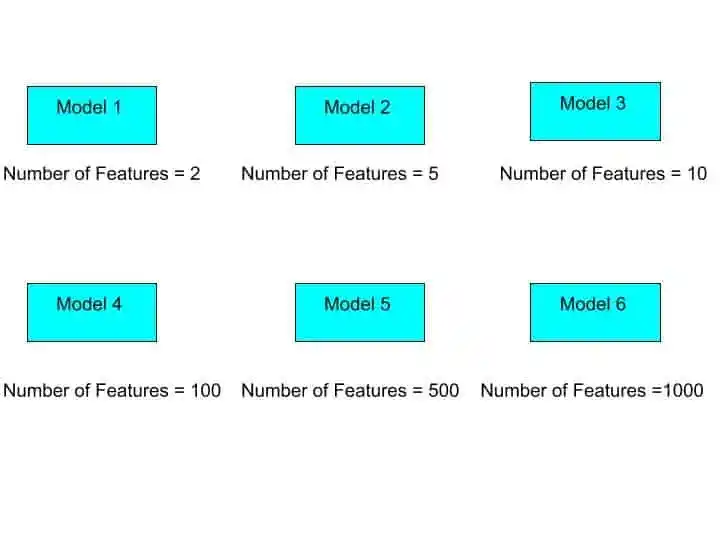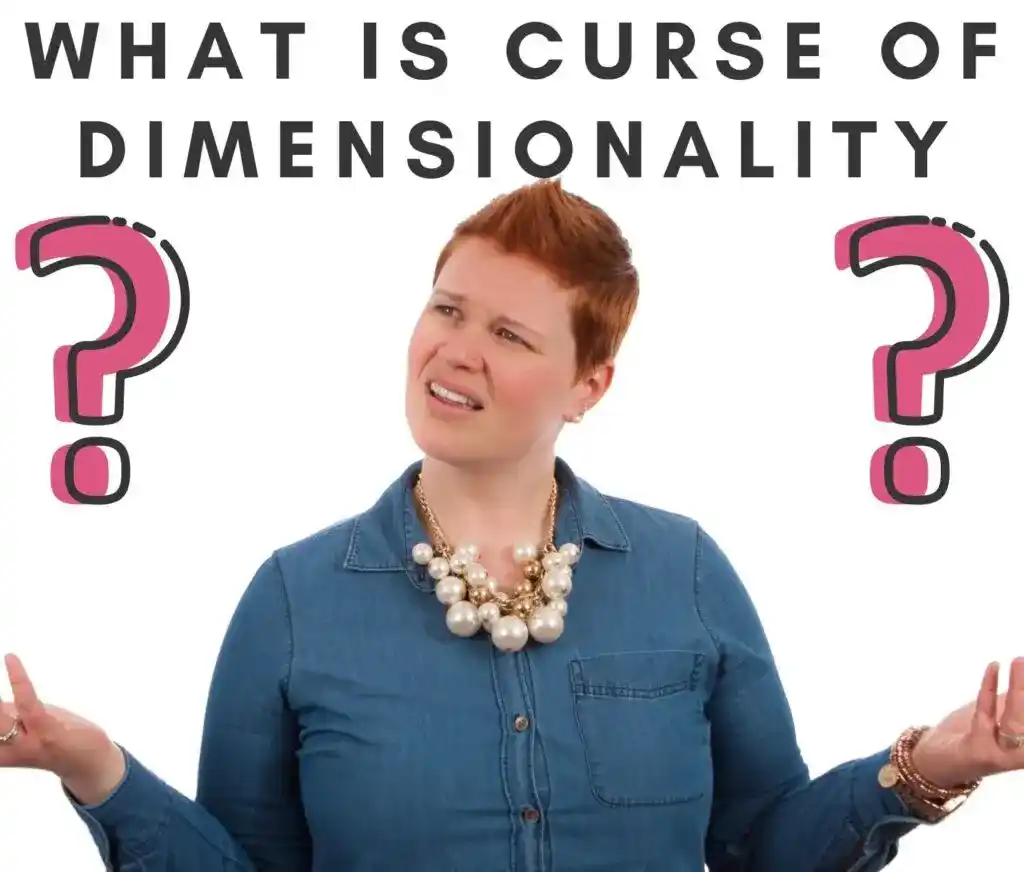Do you wanna know, “What is the Curse of Dimensionality?“. If yes, then you are in the right place. In this article, I will explain, What is the Curse of Dimensionality in the simplest way. So give your few minutes and understand the complex terms, “Curse of Dimensionality“.
Hello, & Welcome!
What is the Curse of Dimensionality?
The Curse of Dimensionality is an important topic to understand for feature selection. The Curse of Dimensionality happens when increasing the number of features, the accuracy of the model decreases. Confused?. Don’t worry!
Let me simplify it!. So,
What do you understand by Dimensions?
Dimensions are nothing but features. These features may be independent or dependent. Features are also called as Attributes.
Let’s understand the whole concept of the curse of dimensionality with the help of an example.
Suppose we have some dataset. Where we have 1000 features. And from that dataset, we are going to build different individual machine learning models.
Lets’s say – Model 1, Model 2, Model 3, Model 4, Model 5, and Model 6.
So, we are going to build 6 Models. Now you may be thinking-
What’s the difference between these models?
The difference is Number of features. Each model has different number of features. As you can see in this image-

Here, Model 1 has 2 features, Model 2 has 5 features, Model 3 has 10 features, and so on. Suppose we have to predict the price of a house. So, in model 1 we use 2 independent features, let’s say the size of the house and number of bedrooms.
After training a model with 2 features, we get some Accuracy. Let’s call this accuracy as Accuracy 1.
Then we build model 2 with the same dataset but with 5 features. These features may be house size, no of bedrooms, city, house age, and house furnishing. So, after training the model with 5 features, we again get some Accuracy 2. And this Accuracy 2 is definitely better than Accuracy 1.
Why?
Because Model 2 has 5 features. That means Model 2 has more information than Model 1. And Model 2 learn more better than Model 1.
That means- Accuracy 1< Accuracy 2
Similarly, we build Model 3 with 10 features. And after training the model 3, we get Accuracy 3. This Accuracy 3 is better than Accuracy 2 and 1.
That means- Accuracy 1< Accuracy 2< Accuracy 3.
So, as we increasing the number of features, the model’s accuracy is increasing. But, after a certain Threshold Value, the model’s accuracy will not increase by increasing the number of features. This Threshold value may be anything. Suppose here the threshold value is 10.
So, after reaching out the threshold value, in Model 4, we train our model with 100 features. Here we get Accuracy 4 and this accuracy will be less than Accuracy 3.
That means- Accuracy 4 < Accuracy 3.
Similarly we train Model 5 and Model 6 with 500 and 1000 features. But we will get worse accuracy than accuracy 4.
Now, you may be thinking- Why this is happening?
This is happening because, before a certain threshold value, the model is learning from useful information. But when we increase the number of features exponentially, the model gets confused. Because we are feeding a model with a lot of information. So the model is not able to train with the correct information. That’s why Accuracy decreases.
So, after a certain threshold value, when accuracy decreases by increasing the number of features is known as the Curse of Dimensionality.
I hope, now you understood, What is the Curse of Dimensionality.
Now, the next question comes-
How to Overcome the Curse of Dimensionality?
The Curse of Dimensionality can be solved by Feature Selection Techniques or by Dimensionality Reduction Techniques ( PCA and LDA).
These feature selection techniques select the subset of features not all irrelevant features and pass these features for model training. So the model generated by these subsets of features is more accurate than the model with all features.
Feature selection technique has 3 methods-
- Filter Method
- Wrapper Method
- Embedded Methods
Principal Component Analysis can also overcome the problem of Curse of Dimensionality.
In this article, I am not going to discuss these techniques. This article is just to give you complete understanding of Curse of Dimensionality. If you want to learn PCA, you can read this article- What is Principal Component Analysis in ML? Complete Guide!
For learning LDA, read this article- Linear Discriminant Analysis Python: Complete and Easy Guide
Now, it’s time to wrap up!
Conclusion
Before training a model, you should overcome the Curse of Dimensionality. This is a serious problem for any machine learning model. The curse of dimensionality impacts model performance.
In this article, I tried to explain the curse of dimensionality in the simplest way. I hope you understood. If you have any doubt, feel free to ask me in the comment section. I will try to give my best.
All the Best!
Happy Learning!
Learn the Basics of Machine Learning Here
Looking for the best Machine Learning Courses? Read this article- Best Online Courses On Machine Learning You Must Know in 2025
Read K-Means Clustering here-K Means Clustering Algorithm: Complete Guide in Simple Words
Are you ML Beginner and confused, from where to start ML, then read my BLOG – How do I learn Machine Learning?
If you are looking for Machine Learning Algorithms, then read my Blog – Top 5 Machine Learning Algorithm.
If you are wondering about Machine Learning, read this Blog- What is Machine Learning?
Thank YOU!
Though of the Day…
‘ Anyone who stops learning is old, whether at twenty or eighty. Anyone who keeps learning stays young.
– Henry Ford
Written By Aqsa Zafar
Aqsa Zafar is a Ph.D. scholar in Machine Learning at Dayananda Sagar University, specializing in Natural Language Processing and Deep Learning. She has published research in AI applications for mental health and actively shares insights on data science, machine learning, and generative AI through MLTUT. With a strong background in computer science (B.Tech and M.Tech), Aqsa combines academic expertise with practical experience to help learners and professionals understand and apply AI in real-world scenarios.

